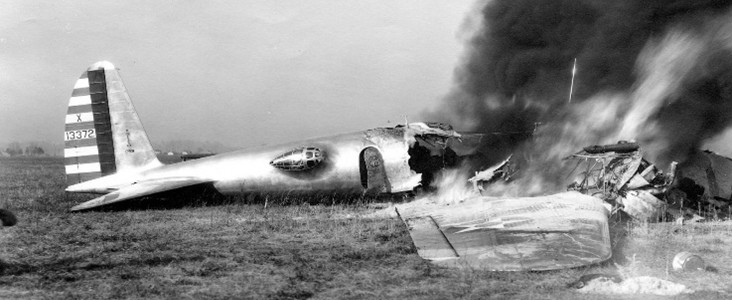
1935: On Halloween in 1935 Lt. Donald Putt flew as copilot of the X-299, with his boss, Pete Hill, in the pilot’s seat. The X-299 was the largest airplane built to that time. This was also before checklists, the things you do before you take off. The tests called for us to conduct a series of climbs to different altitudes to determine optimum climb speeds. We taxied out, Putt recalled, ran the engines up, moved the controls and then gave it the gun. As the airplane picked up speed the nose kept coming up. Hill pushed forward on the stick to keep the nose down, nothing happened. And so, with full power, right over the center of Wright Field, we went up until we were vertical, and then we did a wing-over. That is, we stalled and came back down in a dive, left wing low. The impact split open the wing, and we had a full tank of gas, and the plane immediately caught fire. Pete Hill was killed, the Boeing test pilot on board, Les Towers, died of his burns. I was severely burned. Until that time all aircraft used a piece of wood with a red streamer to lock the aileron. The same with tail and rudder. The X-299, the future B-17, used internal locks. To unlock the control surfaces you just stepped on that thing pulling all the pins inside the control surfaces. Neither Hill nor I had unlocked the controls. (Wolf Samuel, AFHF contributor)
“Cause of crash of the Boeing bomber”
The findings of the Board of Officers convened at Wright Field, Dayton, Ohio, to investigate the cause of the crash on October 30, 1935, of the Boeing Aircraft Company Bombardment plane, model 299, were to the effect that the accident was not due to structural failure, or to the malfunctioning or failure of any of the four engines, the airplane control surfaces or the automatic pilot, but to the locked condition of the rudder and elevator surface controls (primarily the latter), which made it impossible for the pilot to control the airplane.
